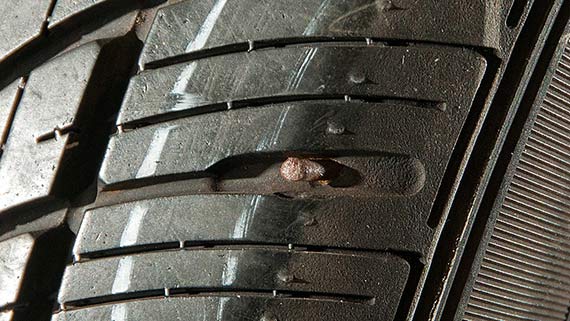Let’s cut to the chase: part worn tyres are often downright dangerous and buying them is a false economy. That’s the view of many industry experts and it’s ours too.
Is it really so black and white as that? We think so. Although there are pros and cons to most sorts of tyres, such as run-flats, seasonal tyres, and uni-directional tyres, part worn tyres are a different case entirely. In our opinion, part worn tyres represent no real advantage for the motorist and have three major disadvantages.
Let’s look at each of these.
Part worn tyres are often illegal
It isn’t illegal to sell part worn tyres in the UK, provided that the dealer sticks to the regulations laid down by trading standards. To be legal:
- The structural integrity must not be compromised.
- It should be free of large cuts, any bulges or lumps both internally and externally.
- No plies or cords should be exposed.
- Tyres must have passed an inflation test prior to sale.
- The original grooves must still be clearly visible in their entirety and must be to a depth of at least 2mm across the full breadth of the tread, around its entire circumference.
- Part worn tyres which have not been re-treaded must clearly show the relevant ‘E’ mark alongside which ‘PART-WORN’ must be permanently and legibly applied in letters at least 4mm high.
- These words cannot be hot branded or cut into the tyre.
These are straightforward rules designed to ensure our safety on the road. If dealers in part worn tyres abided by them, it would be a start. The problem is that many don’t.
It m,ight be tempting to put this down to a few rogue traders, but the evidence seems to suggest otherwise.
For example, in a 2015 survey by TyreSafe, a staggering 98% of the samples they purchased turned out to be illegal. Last month, in a sample of 39 tyres bought from various dealerships, 23% were over ten years old and one was 23 years old! At the other end of the country, Brent and Harlow officers found only 16.7% of their sample from twelve different traders met the required standards (source: tyrepress.com)
We’re not saying that every trader in part worn tyres is operating illegally. But at the same time, it’s hard to deny that the part worn tyre industry has a major problem meeting the minimum legal requirements.
Part worn tyres may be dangerous
Many of the tyres surveyed by regulatory bodies aren’t illegal because of some trivial technicality. They are simply downright dangerous. In the TyreSafe survey, 34% were judged to have ‘potentially dangerous forms of damage or non-compliance.’ If you want to see what that looks like in practice, TyreSafe have gathered together pictures of some of the part worn tyres offered for sale. They are alarming to say the least.
Is it possible to get round this problem by thoroughly checking the tyres before purchase? Not unless you have X ray vision. It’s impossible to know what internal damage a tyre has suffered before it reaches you, and internal damage doesn’t always leave visual clues.
Bear in mind that imported tyres often come from Germany, where the legal minimum tread depth is 3mm. When the tyre reaches this limit, its sold on to UK traders, exploiting the fact that the UK limit is just 1.6mm. But to get down to 3mm of tread typically needs several thousand miles of use – and as a buyer, you have no idea what sort of use that has been. For example, running a tyre at low pressure can damage the internal structure, which can lead to catastrophic failure.
Part worn tyres don’t work out cheaper
So far, we’ve made the case that many worn tyres on sale are illegal, and there’s a risk that they may be dangerous. So why would any motorist buy them? The simple answer is that part worn tyres seem to be a good bargain.
Unfortunately, appearances can be deceptive. As we pointed out above, many part worn tyres have around 3mm of tread remaining on them. By that point, tyres are already beginning to lose some of their performance, and they are only 1.4mm off the UK legal limit. In contrast, a brand new tyre typically starts life with around 8mm of depth. On that basis, part worn tyres just aren’t that cost-effective.
Considering fitting part worn tyres? Just don’t.
Our conclusion is pretty straightforward. With reputable dealers offering great deals on new tyres, we don’t think part worn tyres have anything going for them. In fact, perhaps a more accurate description of ‘part worn’ tyres might be ‘Possibly illegal, possibly dangerous, and probably nearly worn out.’

